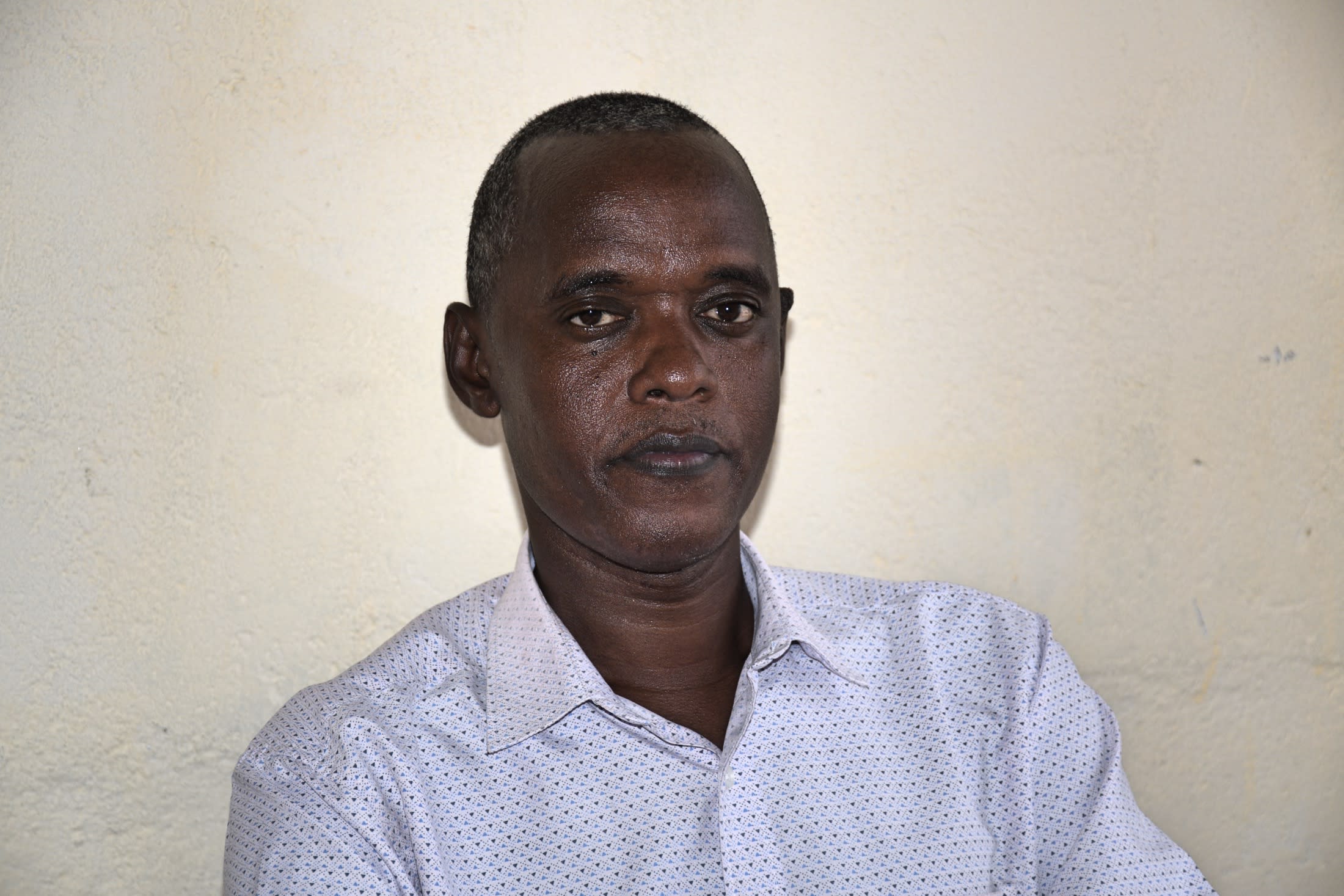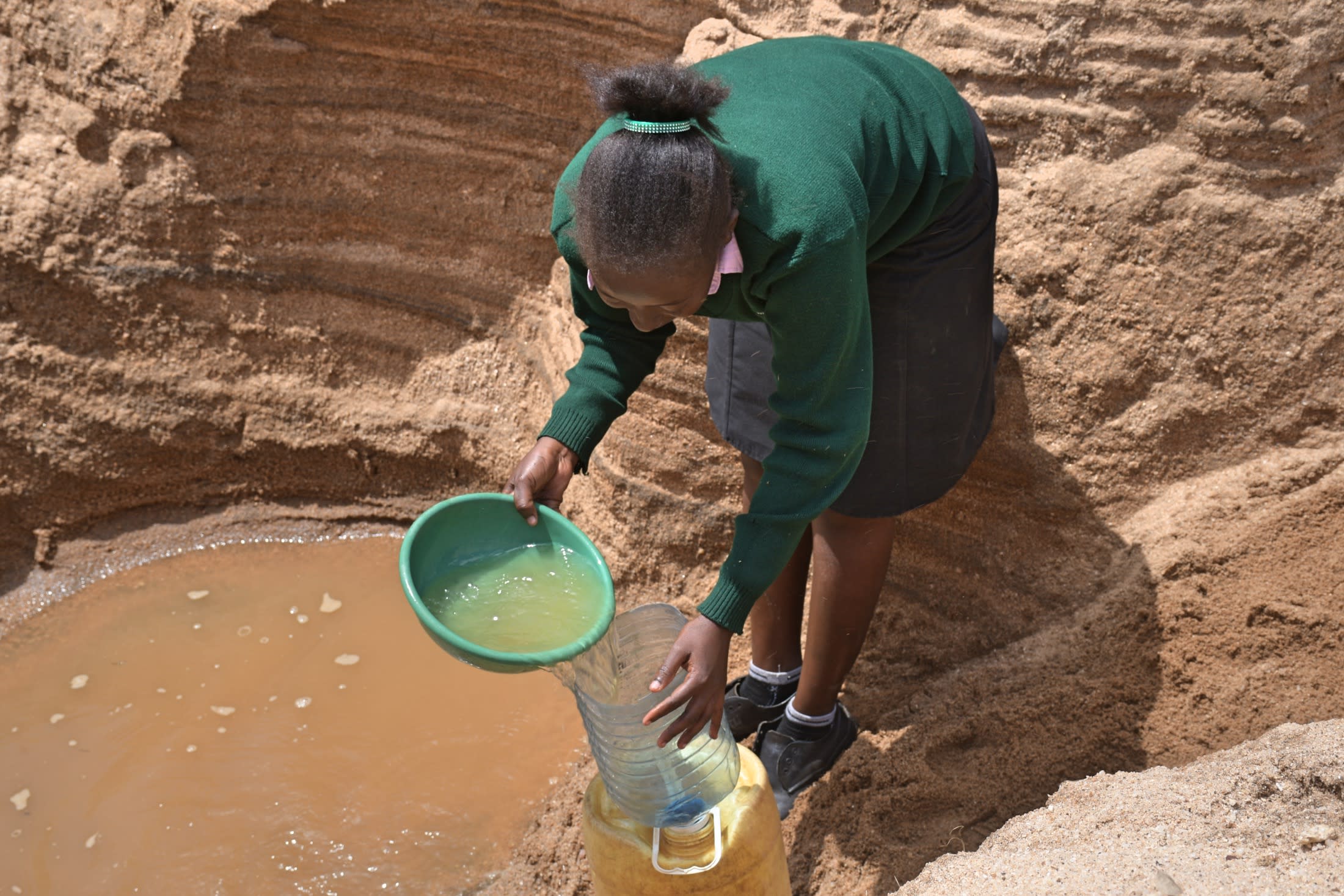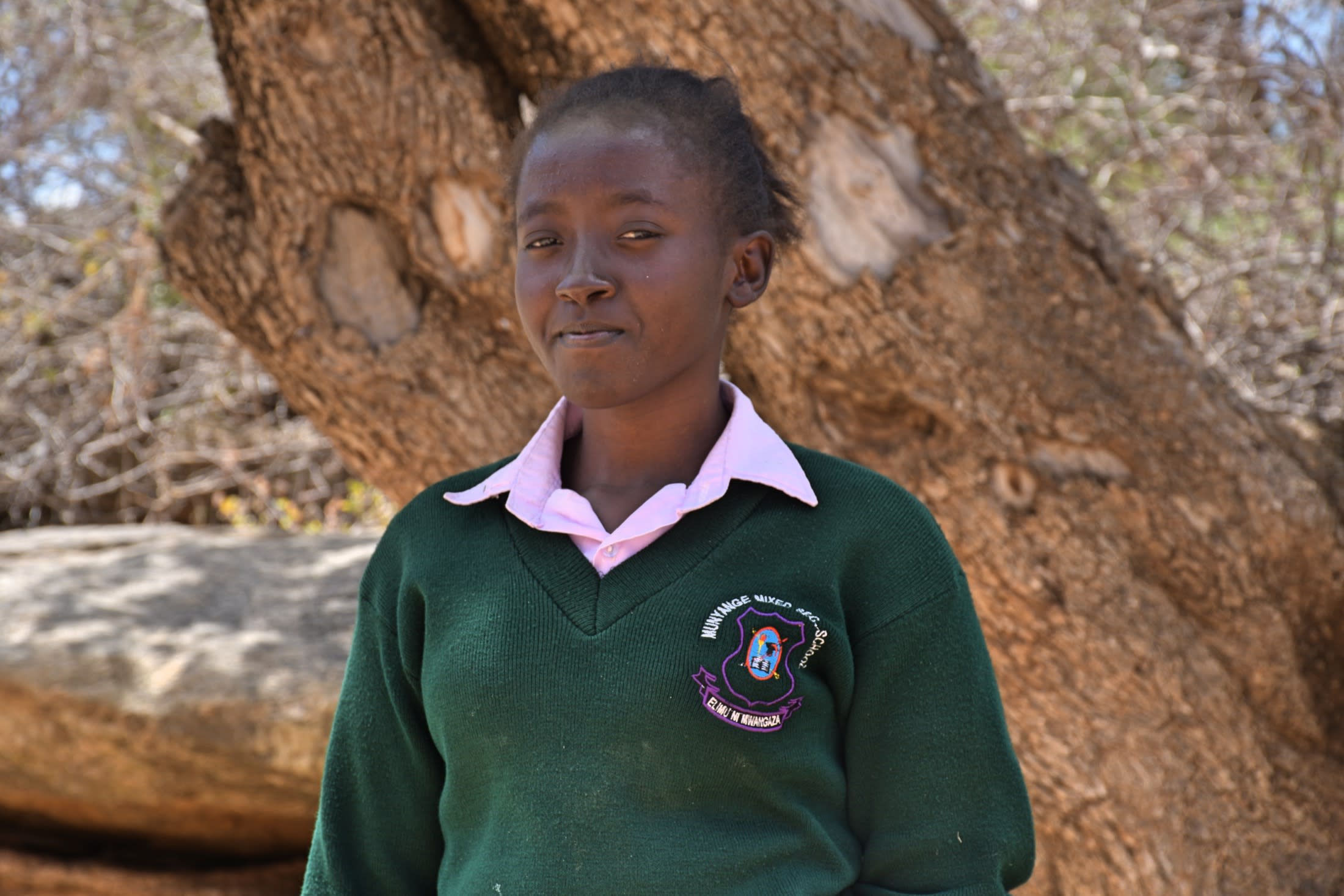Munyange Secondary School is desperate for water. Currently, their only source of water is a small rainwater collection tank that only holds water for a day or two after a rainstorm — and, unfortunately, this region of Kenya is experiencing record-breaking drought (as of this writing in December 2022).
"[The] water shortage affects me because when there is no water, I have to teach when thirsty, and the available water is unsafe for drinking," said deputy headteacher Gideon Nzaghi (pictured below). "My students also find it hard to concentrate because of thirst and [the] unclean learning environment. [The] lack of enough clean drinking water also reduces my [students'] performance in class, leading to dismal academic output."

Currently, much of the school's budget is paid to water vendors because the school administration doesn't want to send the students off school grounds to the closest dry riverbed to collect water from scoop holes. But these vendors are both expensive and unreliable—sometimes water shows up late or not at all, which delays or cancels the school's lunch program. What's even worse is that the vendors are also sourcing water from scoop holes as well, so the school is paying for convenience, not quality.

When the water from the vendors runs out (or never arrives), students must walk long distances—during times when they should be in class—to scoop up brown, salty water that often makes them sick.
"We waste a lot of time fetching water, and finding water for agriculture is also a challenge," said 17-year-old Fridah M (shown below). "We also have to go [to] the river every day to fetch water, which is exhausting and time-consuming. Unclean water leads to diseases and absenteeism. For instance, last week, I was sick from diarrhea and had to stay at home. My father took me to the public hospital, and [I] was diagnosed with amoeba."

But it's not only the water that's hurting the students' health. The lack of water means that the classrooms and latrines can't be cleaned as often as they should be, and the school has no handwashing stations. Students spend their days in filthy environments with only dirty water to drink — a demoralizing situation.
With a high-capacity rain tank on campus, when the rains do come, the tank will fill up all the way and stay full longer. Students' health, outlook, and ability to learn will all improve with time.
Rain Tank
We will build a 104,000-liter rain tank for this school, making the other one look tiny in comparison. Because of how rarely it rains in Southeastern Kenya, this tank's large volume is designed to store as much water as possible during the seasonal rains, making more water available through the dry months. This water will benefit the students, teachers, and supplementary staff.
Parents will mobilize the materials needed for construction, including sand, stones, and water. They will also lend their strength and time to help with the construction. We will complement their materials with a skilled artisan to lead the project in addition to providing the tools, lumber, metal, cement, and gutter system.
As soon as the tank has time to cure, it can begin collecting rainwater for the school's use.
Training
We will train students and staff on sanitation, hygiene, and other topics for 1 day. Those in attendance will form a school health club that will promote good hygiene and sanitation practices both at school and at home. They will learn all of the steps to proper handwashing, how to treat water, and how to keep their environment clean. The school will also be taught how to best oversee and maintain their new rain tank and handwashing stations.
Handwashing Stations
A total of 3 handwashing stations will be installed upon the project’s completion and before training. These are 1,000-liter plastic tanks fitted with 3 taps each, allowing 9 students to wash their hands at once. The student health club and school management will be responsible for making sure the tanks are filled with water and that a cleaning agent such as soap or ash is always available.

 Rainwater Catchment
Rainwater Catchment
 Rehabilitation Project
Rehabilitation Project














